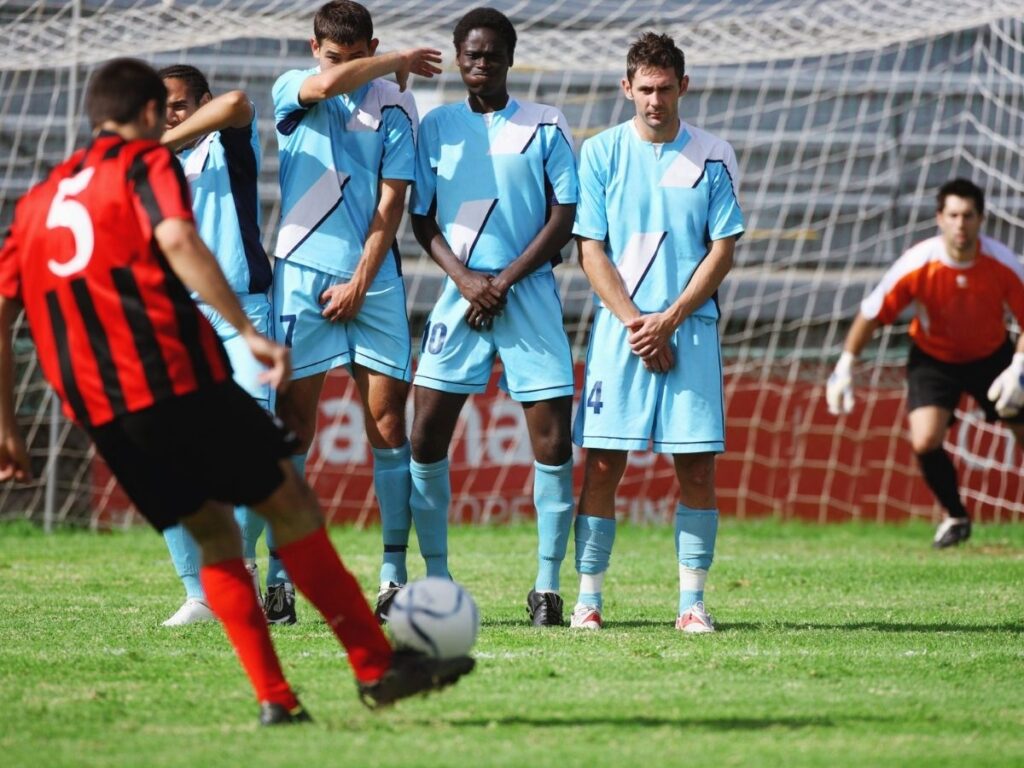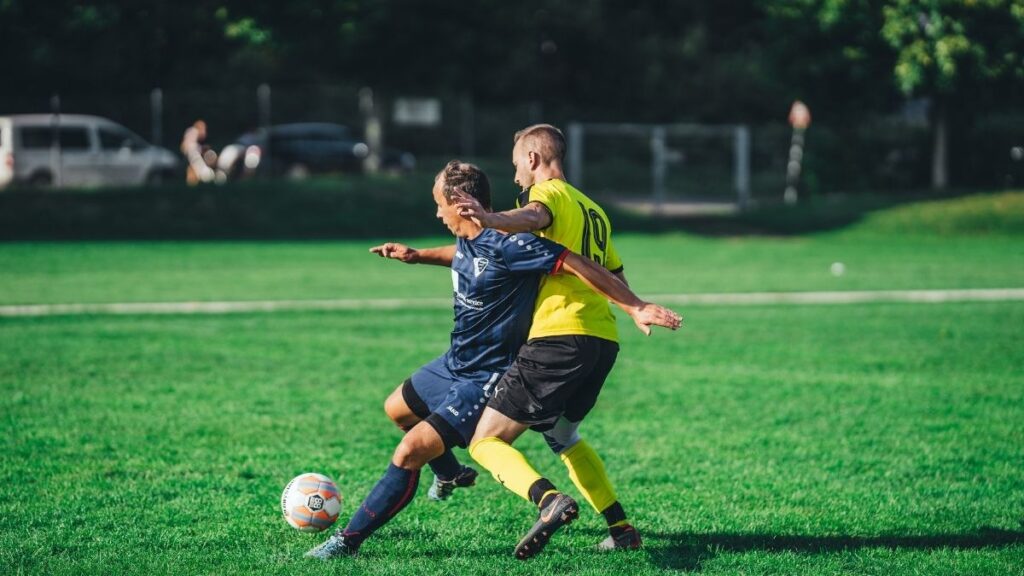Boost your betting experience and get up to $200 bonus right now!
Barcelona’s 2025 midfield revolution is nothing short of a footballing saga that has captivated fans worldwide. Under the astute guidance of Hansi Flick, the Catalan giants have redefined their midfield with a blend of youthful exuberance and seasoned mastery, turning what once seemed like a puzzle into a symphony of tactical brilliance. At the heart of this transformation lies an intriguing confluence of strategic signings, invigorated homegrown talent, and a fearless approach to in-game adaptability. This isn’t just about filling spaces or rotating players; it’s about a radical evolution of playmaking philosophy that resonates in every pass, dribble, and tackle executed on the Camp Nou turf. From the indomitable spirit of veterans like Frenkie de Jong to the dazzling creativity of emerging stars, this midfield melds defensive rigor with attacking flair, a recipe that has propelled Barcelona back into the spotlight of La Liga and Europe alike. With key partnerships fueled by sponsors such as Nike, Gatorade, and Mastercard boosting the club’s global brand, the synergy between commercial success and on-pitch dominance in 2025 has never been more evident. Prepare to dive deep into the revolutionary tactics, player dynamics, and the cultural heartbeat that is roaring behind Barcelona’s midfield powerhouse.

Barcelona’s Tactical Renaissance: Redefining Midfield Roles with Hansi Flick
At the core of Barcelona’s midfield reinvention in 2025 is the visionary work of Hansi Flick, whose tactical mastery has unshackled the team’s creative potential. Flick’s arrival marked a deliberate pivot away from previous uncertainties surrounding the holding midfield role—an area left barren after Sergio Busquets’s departure. Rather than forcing a rigid structure, Flick has embraced versatility, allowing the Catalan ensemble to fluidly shift between formations such as the classic 4-3-3 and the adaptable 4-2-3-1 depending on opponent and match context.
This flexibility is vital as Barcelona juggles multiple competitions, including La Liga and the UEFA Champions League, demanding both tactical adaptability and squad rotation without compromising identity. Central to this is Frenkie de Jong’s evolution from a mere facilitator into a commanding presence who seamlessly transitions between defensive duties and incisive forward passes. His ability to drop deep to collect the ball, then surge forward or pick out attackers with precision, epitomizes the new engine driving Barcelona’s revolution.
Integral too is the rise of young maestros like Pedri and Gavi, whose energy and fearless ball progression breathe life into the midfield. Pedri’s vision coupled with Gavi’s tenacity creates a balanced axis—combining creativity with grit. This midfield unit operates less as isolated individuals and more as a cohesive unit, understanding space, timing, and each other’s movements instinctively. Flick’s tactics emphasize anticipation and positional interchange, meaning no midfielder remains static for long, generating unpredictability against even the most disciplined defenses.
- Emphasis on midfield versatility has seen Barcelona rotate formations seamlessly.
- De Jong’s dual role as deep-lying playmaker and box-to-box dynamo epitomizes the new style.
- Young talents Pedri and Gavi supply energy and creative impetus vital to Barcelona’s attack.
- Flick’s system relies on coordinated positional shifts, confusing opponents and opening spaces.
This tactical shift is not just about how Barcelona attacks, but how they regain and maintain control, with the midfield acting as the team’s engine room. It’s a revolution balancing flair with discipline—a stark contrast to the stagnant moments seen during the team’s previous cycles. With the commercial backing of giants like Adidas and Puma fueling infrastructure and player development, Barcelona’s midfield has been built as much off the pitch as on it. For those eager to understand how clubs morph tactics to their players’ strengths, this case stands out, deserving a deep dive into Barcelona’s ongoing rebuild and identity quest, much like the reinvention PSG is navigating as detailed in this analysis.
Midfield Mastery: The Trio that Powers Barcelona’s 2025 Charge
Barcelona’s midfield revolution hinges on the synergy between three pivotal figures whose combined influence transcends mere statistics. Leading this triumvirate is Pedri, the youthful catalyst whose fearlessness and intuitive passing unlock defenses with surgical precision. Alongside him, Gavi offers relentless energy and pressing intensity that epitomizes modern football’s demands for dynamic two-way contributors. Finally, Frenkie de Jong forms the backbone, blending his tactical understanding and ball-winning skills into the mix.
In 2025, this midfield trio has not only gelled but raised the bar for what it means to dominate central areas. Pedri’s range of passing, including precise through balls and creative flair, complements Gavi’s hustle and willingness to cover vast ground. De Jong often acts as the anchor, orchestrating transitions by recycling possession and executing long, visionary passes that launch counterattacks. Together, they form a midfield unit capable of controlling tempo, choking opponents’ creativity, and igniting their own forwards with momentum.
Their statistical outputs reinforce this narrative. Pedri leads in key passes with an average of 3.2 per 90 minutes, constantly threading balls into tight spaces. Gavi tops pressing success rates, actively recovering possession high up the pitch, while de Jong excels in successful progressive passes exceeding 40 meters, a trademark launchpad of Barcelona’s fast breaks. This impressive balance makes it difficult for opposing teams to plan defensive structures against a midfield that intimidates with both creativity and work rate.
| Player | Key Passes per 90 | Pressing Success % | Progressive Passes per 90 |
|---|---|---|---|
| Pedri | 3.2 | 68% | 14.5 |
| Gavi | 2.1 | 78% | 11.2 |
| Frenkie de Jong | 2.5 | 70% | 16.8 |
Barcelona’s dependence on this trio is reminiscent of the tactical solidity emerging from other tactical powerhouses like Atalanta, whose midfield structure is dissected expertly at this Tactical Powerhouse deep dive. In 2025, the synergy among Pedri, Gavi, and de Jong is a microcosm of Barcelona’s midfield revolution — seamlessly blending youth, intelligence, and sheer doggedness supported by heavy investments and sponsorship deals from brands like Nike and Rakuten.
When these three are on the pitch, Barcelona’s rhythm is unmistakable: rapid interplay, a high pressing game, and relentless creation. This fluid midfield not only orchestrates attack but sets the defensive tone through energetic ball recovery. The result? A team that feels rejuvenated, hungry, and ready to reclaim its rightful place among football’s elite.
Transforming Midfield Culture: From Trophies to Teamwork and Trust
Beyond tactics and statistics, Barcelona’s midfield renaissance in 2025 is deeply rooted in cultural transformation. The trio’s bond isn’t just about effective on-field cooperation; it represents a renewed spirit of trust, resilience, and collective ambition that permeates the squad. This transcends ordinary teamwork — it’s a brotherhood born from shared struggles, ambitions, and the relentless pursuit of glory.
The story of Alexia Putellas, Aitana Bonmatí, and Patri Guijarro in Barcelona’s women’s midfield offers a poignant parallel. Despite injuries, illnesses, and tough competition, their unyielding synergy has lifted Barcelona’s women’s side and brought new hope for Spain’s national team, setting a blueprint for camaraderie and determination. This echoes the ethos Flick instills in the men’s team. Putellas’ come-back from an ACL injury and Bonmatí’s recovery from meningitis to earn MVP honors inspire a winning mentality that resonates throughout the club.
In men’s football, similar traits shine in the midfield renaissance. Leadership from veterans and willingness of younger players to embrace roles for the collective good have created an atmosphere where individual brilliance enhances team accomplishment. Sponsors like Spotify and Beko further reflect how Barcelona’s values are intertwined with musical rhythms and community engagement, reaffirming a connection between football and broader culture in 2025.
- Renewed teamwork philosophy emphasizes trust, intention, and sacrifice.
- Stories of resilience, such as Putellas’ and Bonmatí’s recoveries, fuel collective spirit.
- The club leverages global partnerships with Qatar Airways and Mastercard to project its values worldwide.
- Shared commitment under Flick’s management fosters consistency and mental toughness.
This cultural foundation is crucial. It allows for deeper understanding between players and creates an environment conducive to innovation and risk-taking on the pitch. More than just tactics, this is a psychological revolution that has made Barcelona’s midfield not just a production line of passes, but a heartbeat that drives the team’s soul.

Barcelona’s Midfield Reinforcement Strategy: Balancing Experience and Emerging Talent
To sustain and amplify its midfield revolution, Barcelona is aggressively scouting and acquiring talents who fit the club’s philosophy while preparing the next generation. The summer 2025 transfer window shows a clear pattern of strategic signings and carefully nurtured academy graduates ready to step up.
The club’s approach balances buying proven talents with investing in youth players who understand the demands of modern football’s pace and intensity. Targets for the 2025 market reflect this blend, with the club focusing on midfielders capable of high pressing, quick transitions, and creative output. This strategy echoes the wider football market trends where clubs like Arsenal emphasize long-term squad stability as analyzed in this feature.
| Player | Age | Role | Expected Impact |
|---|---|---|---|
| New Madrid Target | 23 | Defensive Midfielder | Provide steel in midfield ball recovery |
| Barcelona Academy Graduate | 20 | Central Midfielder | Inject creativity and energy |
| Experienced European Veteran | 28 | Box-to-box Midfielder | Leadership and stability |
This recruitment opens exciting possibilities. With sponsorship from global brands like EA Sports, Puma, and Rakuten blessing these efforts, Barcelona sustains its role as a global football cultural icon. The balance between youthful energy and experienced poise ensures the midfield is not just a present powerhouse but a future-proof fortress.
Moreover, this methodical rebuilding mirrors how regions like Catalonia nurture their unique football identities. A glimpse into the Girona Catalan blueprint reveals how regional talent development underpins wider strategies—as detailed in this exploration. Barcelona’s midfield reinforcement is not about just adding names but blending philosophy, heritage, and ambition.
The Commercial Engines Fueling Barcelona’s Midfield Revolution
One cannot understate the role of global sponsorship and commercial dynamism in Barcelona’s football revolution. The echoes of each pass and tackle are amplified by the backing of leading brands that bring financial muscle and global marketing prowess, allowing for sustained player development and state-of-the-art facilities.
In 2025, partnerships with giants like Nike and Adidas remain pivotal, supplying top-tier kits that combine cutting-edge technology with iconic style, enhancing player performance and fan engagement. Meanwhile, brands like Qatar Airways and Gatorade support the club’s travel and physical conditioning needs, creating an ecosystem where players can perform at peak levels.
Digital engagement partners such as Spotify enhance Barcelona’s cultural reach, integrating music and fan experiences worldwide, while platforms like Mastercard provide secure global financial transactions that connect the club with international supporters. This multifaceted commercial strategy underscores how business and sport converge to elevate Barcelona’s status globally.
- Nike and Adidas provide high-tech gear contributing to player agility and endurance.
- Qatar Airways streamlines global squad travel facilitating tight match schedules.
- Gatorade ensures top-level hydration and recovery protocols.
- Spotify engages fans with music-driven campaigns increasing club culture outreach.
- Mastercard supports financial operations ensuring global fan accessibility.
This confluence of commerce and sport creates a positive feedback loop where business success enables footballing innovation, and on-pitch achievement further enhances brand visibility. Understanding this ecosystem is key to appreciating why Barcelona’s midfield revolution is more than tactics — it’s a holistic transformation intertwining football artistry with global culture and commerce.
Join today and grab up to $200 bonus for your next bets!
Content assisted by AI. This article was created in whole or in part with the help of artificial intelligence.